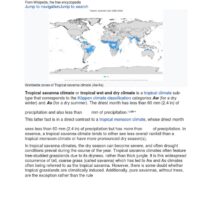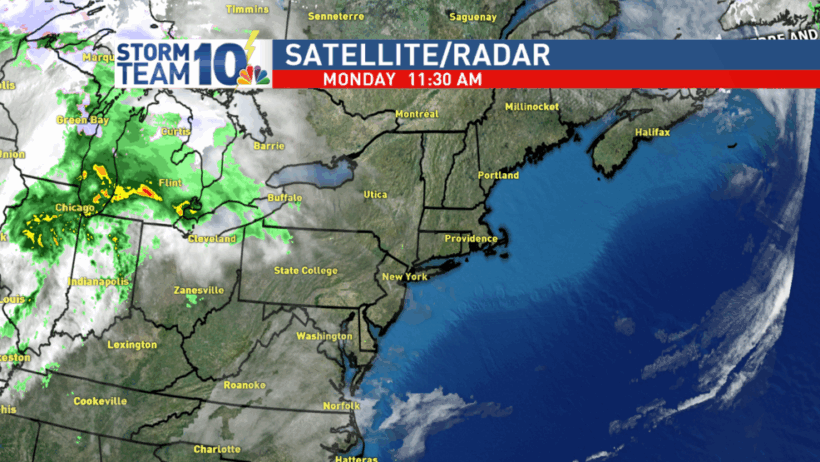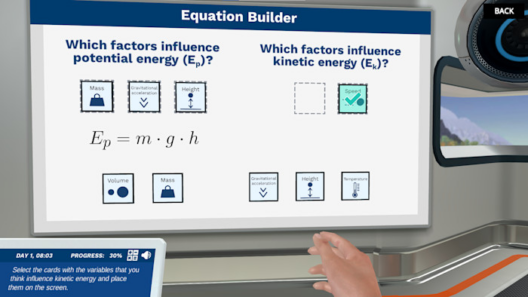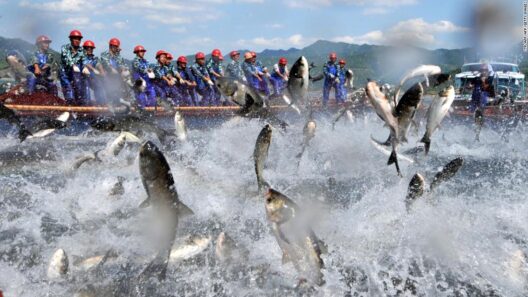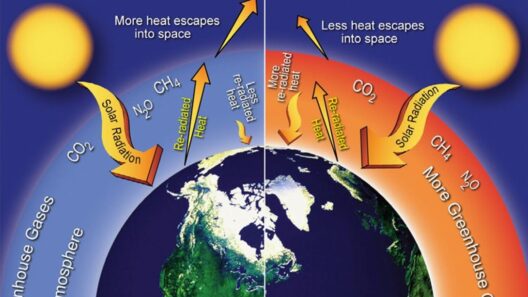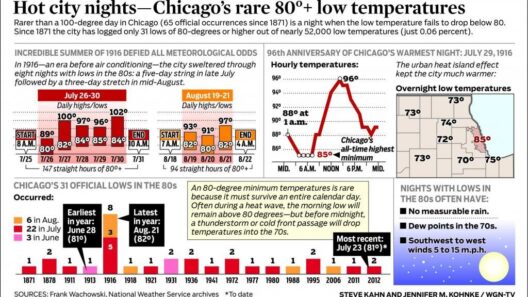The Midwest, often affectionately dubbed the “Heartland,” is characterized by its vibrant tapestry of climates that shift like the seasons’ very own chameleons. This region encapsulates an intricate interplay of meteorological phenomena, painting a vivid picture of climatic variety that can only be compared to a swirling rollercoaster of weather. Amongst the cornfields, prairies, and bustling cities, the climate in the Midwest pulsates with a unique rhythm, a combination of temperature extremes, precipitation patterns, and atmospheric quirks.
Four Distinct Seasons: A Symphony of Change
In the Midwest, the transition from one season to the next feels like an artist’s brush sweeping across a canvas, transforming landscapes in a visually stunning manner. Spring brings a sense of renewal as it nudges winter’s icy grip away. With the thaw, the earth awakens, and wildflowers burst forth in vivid shades of color—the weather becomes a gentle reminder of life’s resilience amidst prior adversities.
However, as spring blossoms into summer, the climate takes a dramatic upturn, marked by stifling heat and humidity that envelop the region like a heavy blanket. The Midwestern summer is a paradox—while the days can reach sweltering temperatures, threatening to challenge even the hardiest of souls, evenings often deliver a refreshing breeze, a respite from the sun’s incessant warmth. Thunderstorms frequently punctuate this season, crackling skies unleash powerful rain systems, reminding us of nature’s ferocity.
As summer wanes, autumn steps in with a symphony of colors—a spectacular encore to summer’s grandeur. Crisp air fills the atmosphere as trees transform into dazzling displays of crimson, gold, and amber. Yet, autumn ushers in a transformation of another kind: the potential for early frosts and the first whispers of winter’s impending arrival. The transition is often abrupt, and residents brace for the emotional rollercoaster of a rapidly cooling climate.
Winter arrives with a majestic yet formidable presence, blanketing the land in glistening snow. The chill cuts through the day, transforming the Midwest into a serene, monochromatic landscape. Ice storms can render roads impassable and decimate power lines, resulting in eerie silence broken only by the crunch of snow underfoot. The seemingly tranquil beauty belies the rigorous trials this season imposes on both wildlife and human inhabitants. Shoveling paths and trudging through blustery winds becomes an integral part of Midwestern life.
A Climate of Extremes: Tornadoes and Blizzards
The heart of the Midwest is also synonymous with extreme weather events, further adding to its climatic rollercoaster ride. Known as “Tornado Alley,” this region is notorious for its propensity to produce some of the most violent tornadoes on record. The merging of warm, moist air from the Gulf of Mexico and cool, dry air from Canada creates an explosive cocktail, birthing formidable storms that can lead to catastrophic destruction. Tornado warning sirens serve as surreal reminders of nature’s unpredictable ferocity, prompting communities into action and preparation.
Conversely, the blustery winter storms present their own brand of chaos. Each flake of snow, while beautiful, possesses the potential to cause crippling disruption. Blizzard conditions can arise suddenly, bringing fierce winds that sweep across fields and roads, reducing visibility to mere feet. The allure of a snow-laden landscape often gives way to the harsh reality of slippery roads and the anxiety that comes with navigating beneath a sky laden with heavy snowclouds.
The Impact of Climate Change: An Unpredictable Future
As the climate shifts globally due to human activities, the Midwest is not immune to these changes, and the ramifications are far-reaching. Temperatures are gradually inching upwards, leading to longer growing seasons, yet paradoxically, increased instances of drought are becoming more prevalent. The delicate balance of precipitation is disrupted, with heavy downpours leading to flash flooding in some areas, while others struggle to survive prolonged dry spells.
This newfound unpredictability impacts not only agriculture—an economic backbone of the Midwest—but also the natural ecosystems that thrive in this region. The intricate web of life that depends on consistent weather patterns is unraveling, with various species struggling to adapt to the rapidly evolving environment. The iconic corn and soybean fields, symbols of the Midwest’s agricultural prowess, face a battle to remain resilient in the face of ever-increasing climatic uncertainty.
A Call to Action: Embracing Resilience and Sustainability
In light of these pressing issues, there exists an urgent need for communities, farmers, and policymakers to band together to forge a path towards resilience. Initiatives focused on sustainability are critical as the Midwest navigates this ever-changing climate landscape. Adopting diverse agricultural practices, enhancing water conservation measures, and investing in renewable energy sources become integral components of a forward-thinking strategy.
Moreover, raising awareness about the impacts of climate change can galvanize communities into action. By fostering dialogue and understanding, Midwesterners can collectively advocate for policies that prioritize environmental health and sustainability. This collective effort can ensure that the heart of the nation remains a vibrant, resilient place for generations to come.
Ultimately, navigating the climatic rollercoaster of the Midwest reveals the tenacity of its people and their inherent adaptability. While the weather may be unpredictable, the spirit of the region stands unwavering, ready to meet each challenge head-on in a continual pursuit of harmony with nature.

